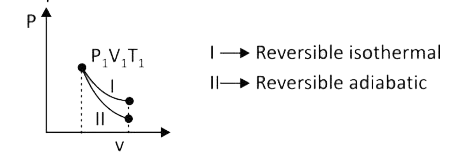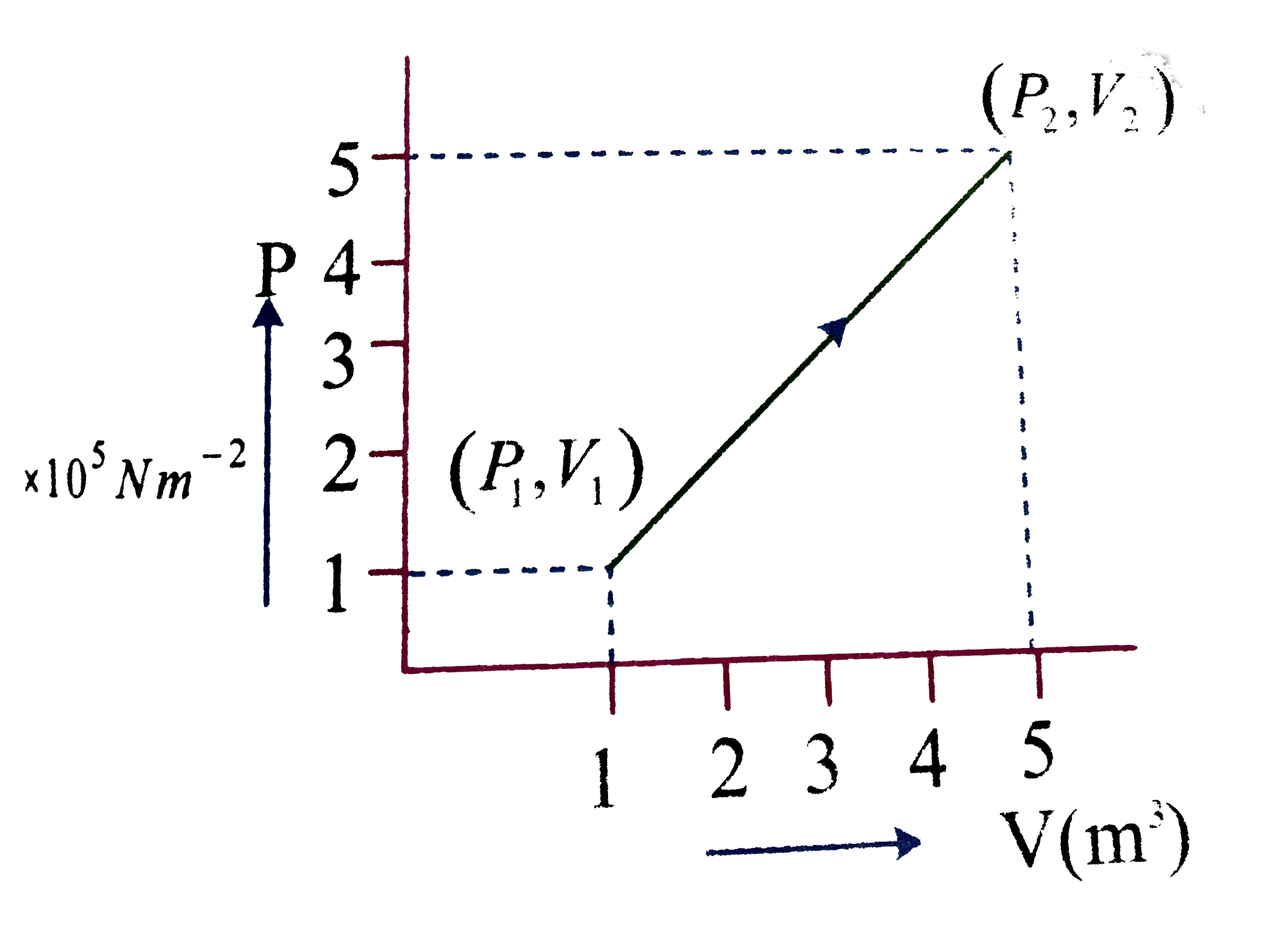A thermo-dynamical system is changed from state (P1,V1) to (P2,V2) by two different process. The quantity which will remain same will be
The work done on the gas is maximum when it is compressed irreversibly from (p2,V2) to (p1,V1) against constant pressure p1.
The change in internal energy of the gas is (i) zero, if it explained reversibly with T1=T2, and (ii) positive, if it is expanded reversibly under adiabatic conditions with T1≠T2.
If the expansion is carried out freely, it is simultaneously both isothermal as well as adiabatic
The work done by the gas is less when it is expanded reversibly from V1 to V2 under adiabatic conditions as compared to that when expanded reversibly from V1 to V2 under isothermal conditions.
The correct Answer is:acd
statement-1p1,V1,T1Expansion−−−−−→statement-2P2,V2,T2
⇒ Work done in reversible compression process is smaller than the work done in irreversible compression process.
⇒ΔU=0 for reversible isothermal expression.
ΔU<0 for reversible adiabatic expansion.
⇒ For free expansion q=0, w=0 and ΔU=0, hence it is simultaneously both isothermal (ΔU=0) as well as adiabatic (q=0)
⇒ Work done in reversible adiabatic expansion is less than the work done in reversible isothermal expansion as shown in figure.

Topper's Solved these Questions
- THERMODYNAMICSBook:VMC MODULES ENGLISHChapter:THERMODYNAMICSExercise:JEE (MAIN ARCHIVE)
Explore 32 Videos
- THERMOCHEMISTRYBook:VMC MODULES ENGLISHChapter:THERMOCHEMISTRYExercise:JEE ADVANCED (ARCHIVE)
Explore 31 Videos
- THERMODYNAMICS & THERMOCHEMISTRYBook:VMC MODULES ENGLISHChapter:THERMODYNAMICS & THERMOCHEMISTRYExercise:Impeccable
Explore 48 Videos
Similar Questions
Directions: The following question has four choices out of which ONLY ONE is correct.
A thermodynamical system is changed from state (P1,V1) to (P^², V^²) by two different processes, the quantity which will remain same is:
View SolutionA system changes from the state (P1,V1) to (P2,V2) as shown in the diagram. The work done by the system is

View SolutionA thermodynamic system goes from states (i) P1,V to 2P1,V (ii) P,V1 to P2,V1. Then work done in the two cases is
View SolutionAn ideal gas is expand from (p1,V1,T1) to (p2,V2,T2) under different conditions. The correct statement(s) among the following is (are):
View SolutionA system can be taken from the initial state p1,V1 to the final state p2,V2 by two different methods, let ΔQandΔW represent the heat given to the system and the work done by the system. Which of the following must be the same in both the method?
View SolutionAssertion: When ideal gas expand from P1,V1,T1, to P2,V2,T2 two steps, and work done is high in which number of steps are high
Reason: Work is path function
View SolutionA gas with cpcV=γ goes from an intial state (p1,V1,T1) to a final state (p2,V2,T2) through an adiabatic process. The work done by the gas is
View SolutionOne mole of hydrogen, assumed to be ideal, is adiabatically expanded from its initial state (P1,V1,T1) to the final state (P2,V2,T2). The decrease in the internal energy of the gas during this process will be given by
View SolutionThe state of a mole of an ideal gas changed from state A at pressure 2P and volume V follows four different processes and finally returns to initial state A reversibly as shown below in the graph. By interpreting the graph, answer the following questions.

Which is the kind of process followed from state A to state, B?
View SolutionThe state of a mole of an ideal gas changed from state A at pressure 2P and volume V follows four different processes and finally returns to initial state A reversibly as shown below in the graph. By interpreting the graph, answer the following questions.

Which is the kind of process followed from state A to state, B?
View Solution